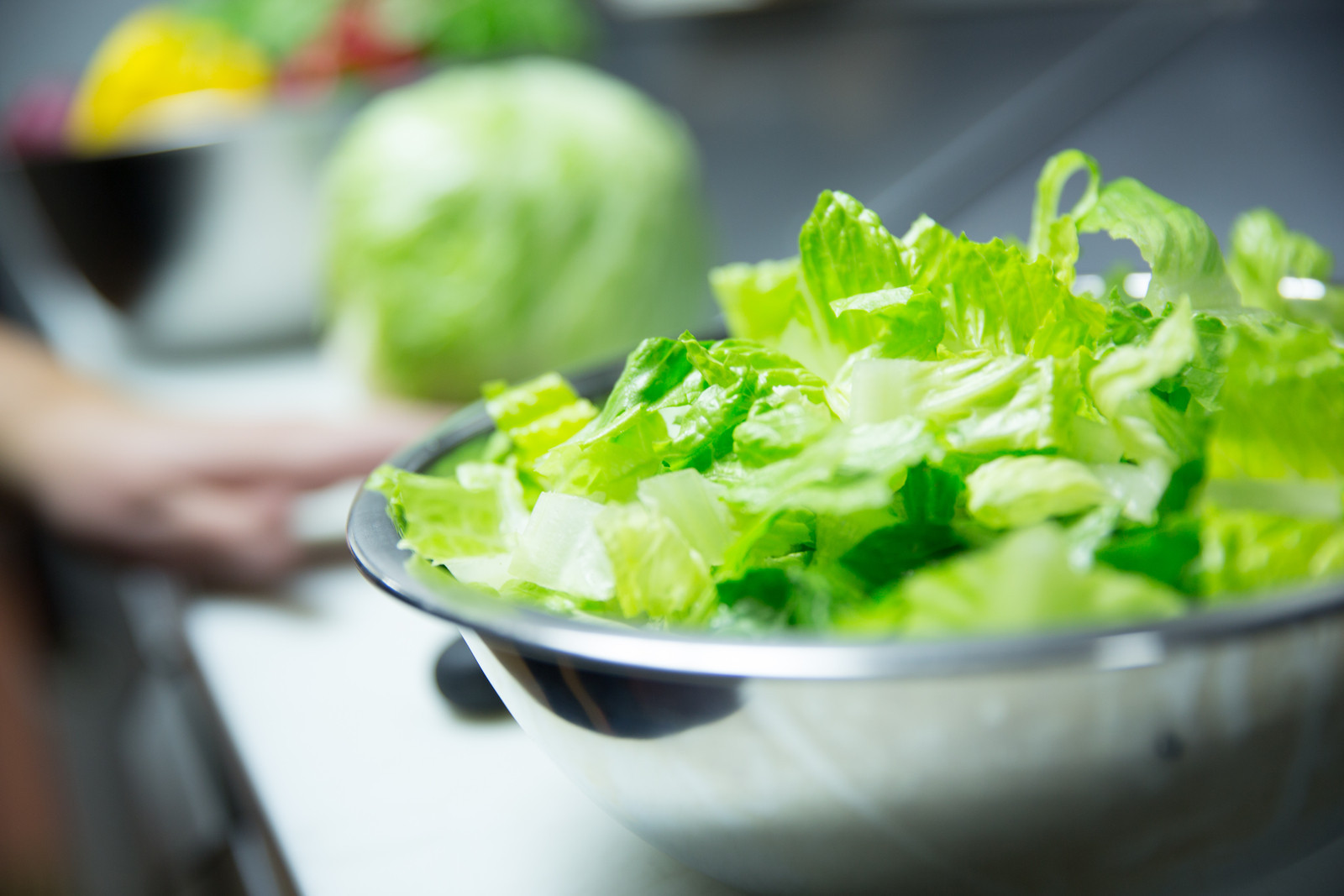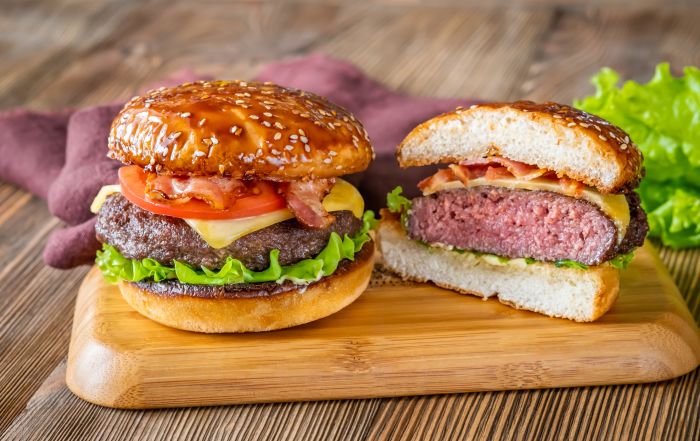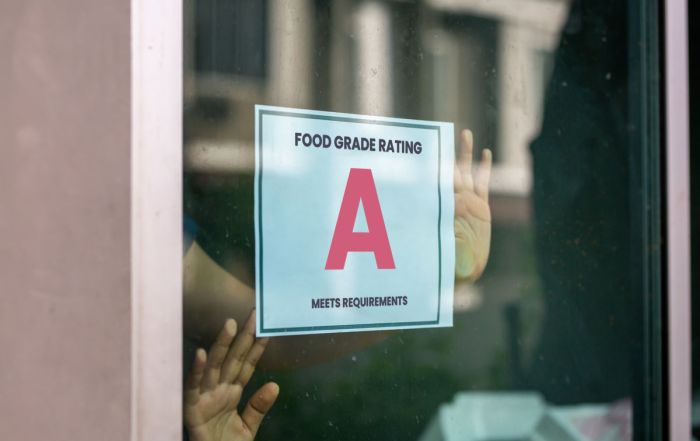The Eleven Commandments of Food Safety at Your Restaurant
 Lists help us remember all kinds of information. Given the list of recent national foodborne outbreaks in the news, keep repeating this list to your food service team. They are kind of like “commandments”. As a professional in a food service facility we should think of the very basic food safety concepts that every crew member should aspire to learn, even though this list may have different priorities based on your menu. The first 3 apply to anyone who serves food, from a bag of popcorn to a full course meal. As chefs or managers, if we can “set the example” by repeating good food safety practices visibly to the crew, it will help them understand how important it is to the success of your facility. Thou shalt:
Lists help us remember all kinds of information. Given the list of recent national foodborne outbreaks in the news, keep repeating this list to your food service team. They are kind of like “commandments”. As a professional in a food service facility we should think of the very basic food safety concepts that every crew member should aspire to learn, even though this list may have different priorities based on your menu. The first 3 apply to anyone who serves food, from a bag of popcorn to a full course meal. As chefs or managers, if we can “set the example” by repeating good food safety practices visibly to the crew, it will help them understand how important it is to the success of your facility. Thou shalt:
1.) Train every employee about correct handwashing, monitor it, document the process & use positive reinforcement. Use a 20 second handwash, cleaning the fingertips with a soft nailbrush. Know how, when, and why it’s important. Handwashing is the number one practice YOU CAN DO to prevent a foodborne illness!
2.) Be a safe food handler. Restrict or send home crew members that are ill, so they do not handle foods. Require strict personal hygiene from all employees. Wear clean uniforms and hair restraints. Never wear jewelry or artificial nails at work.
3.) Enforce “no bare hand contact with ready-to-eat foods” and train your staff exactly what that is. Wash hands and use alternatives such as disposable gloves, clean utensils or paper wraps to handle all ready-to-eat foods.
4.) Identify all potentially hazardous foods on your menu and keep them as cold as possible during storage and preparation.
35 to 38°F internal food temperature is best — no higher than 41° F maximum.
Keep FROZEN FOOD AT 0°F. Thaw foods safely a day in advance under refrigeration.
5.) Obtain food supplies from reputable approved sources. Inspect foods for spoilage and check temperatures when receiving from the supplier, during cold storage, and on the prep tables. When in doubt, throw it out!
6.) Observe time & temperature guidelines to prevent cross-contamination in storing and handling food prepared in advance of service. Label foods prepared with product, date, time, and temperature.
7.) Teach all crew members to use temperature charts and a stem thermometer. Remember to keep foods out of the DANGER ZONE 41° to 135° F. Use the four hour limit. Keep hot foods hot and cold foods cold!
Check food temperature in 2 places — the thickest portion & the center.
Sanitize the thermometer stem before & after use with an alcohol swab.
8.) Avoid cross-contamination of raw and ready-to-eat foods by hands, utensils and equipment. Keep raw products separate from ready-to-eat foods. Wash, rinse and sanitize food contact equipment.
9.) Cook and heat-process food to above recommended minimum temperature (usually 145°F, 155°F or 165°F based on the kind of food). Post a chart for the crew. Memorize your minimum cooking temperatures for the common raw foods you cook in your facility.
10.) Rapidly chill hot food to below 41°F within 4-6 hours! Use ice bath, shallow pans, stirring, cut or reduce into smaller portions, and uncover while in the cooling process (check local regulations).
11.) Reheat food quickly to 165° F + (hold for 15 seconds) within 2 hours. Hot hold foods at 135°F or above.
Bottom Line: Repeat, repeat, and repeat the list to the new staff members and the veterans!
***
About the Author: Lacie Thrall

This information is provided as a general guideline and is not intended to be, nor does it, constitute legal or regulatory advice. Additional Federal regulations may apply to your particular circumstances. State, regional and local laws, ordinances and regulations may also apply.
READ MORE POSTS
Embracing Technology for Enhanced Food Safety in Foodservice Operations
Technology. We love it, we hate it. I’ve always been fascinated by technology; I remember getting my first Blackberry in the mid-90s and thinking it was the pinnacle of technological advances. Before that, I remember ordering a dictation program in college that was going to revolutionize the way I “typed” my assignments. Looking back, it really wasn’t worth the box that the program came in. Now, we have ChatGPT that will write the entire paper for us!
Meat Color and Doneness: Persistent Pinking
Late in June, my family and I were able to visit the Black Hills, an area of the country in which I have not had the opportunity to spend much time. One evening, as we dined at a local restaurant, I observed a table across the dining room sending back a dinner. While I couldn’t hear the entire conversation and I certainly wasn’t trying to eavesdrop, it was apparent that the customer was unhappy with the cooking of their hamburger and was sending it back because it was too pink in the middle. That immediately brought to my mind the phenomenon known as persistent pinking. A term I became familiar with because of work done by some colleagues here at Kansas State, which they present each summer to a group of foodservice operators who join us on-campus for an in-depth week-long look at all things food safety.
Quat Binding – Why this Can Have a Disastrous Impact on Your Sanitation Program.
In June, I had the opportunity to represent FoodHandler and speak on food safety behavior for customers of Martin Bros. Distributing in Waterloo, Iowa. One of the questions that was asked caught me a little off guard. The question was about quat binding. It caught me off guard not because it was a bad question, but only because it was not something I had previously been asked nor had not yet been exposed to the phenomenon. However, I soon learned that in certain jurisdictions, it is resulting in changes to how sanitizing cloths are to be stored in sanitizing buckets (or not) in the foodservice industry. When I returned home from the trip, I had to dig into it to learn about what quat binding is and how it might impact foodservice operations.
Are Grades for Foodservice Inspections a Good Idea?
I generally try to stay away from controversial topics in my blog, but this is one I thought it might be interesting to discuss. Occasionally on my travels, I will come across a state or a local jurisdiction that requires foodservice inspection scores be posted in the window of the establishment. The idea is to allow would-be customers the ability to see how the foodservice operation in which they are about to eat scored on their latest health inspection.










